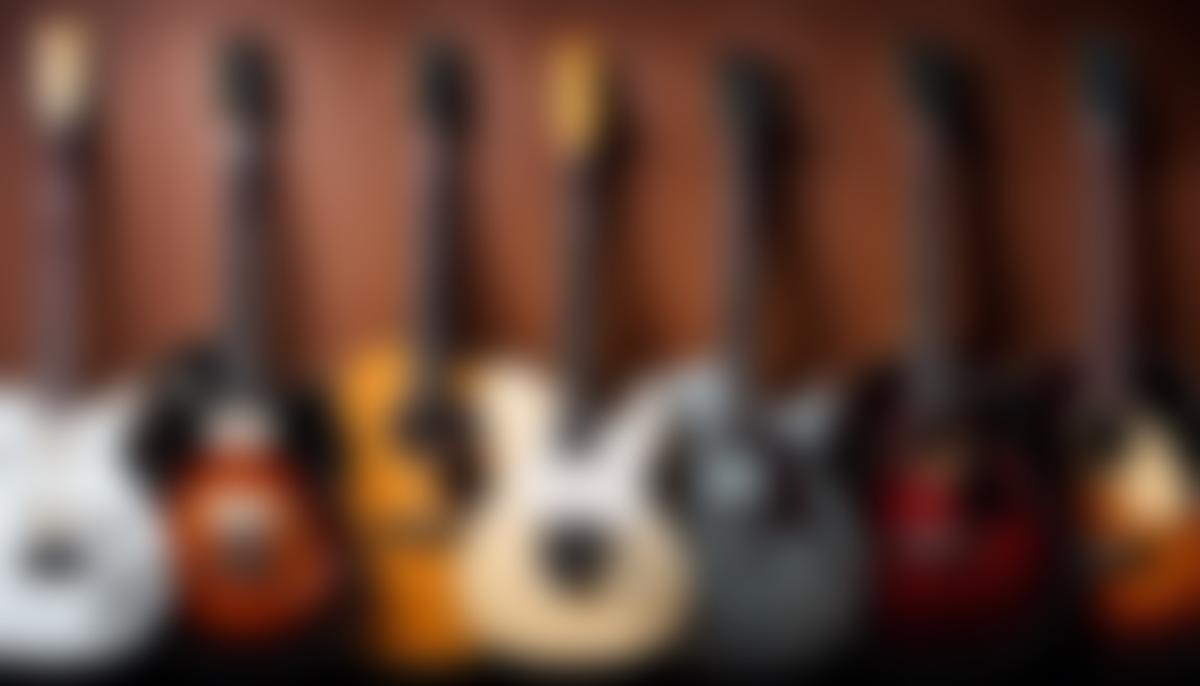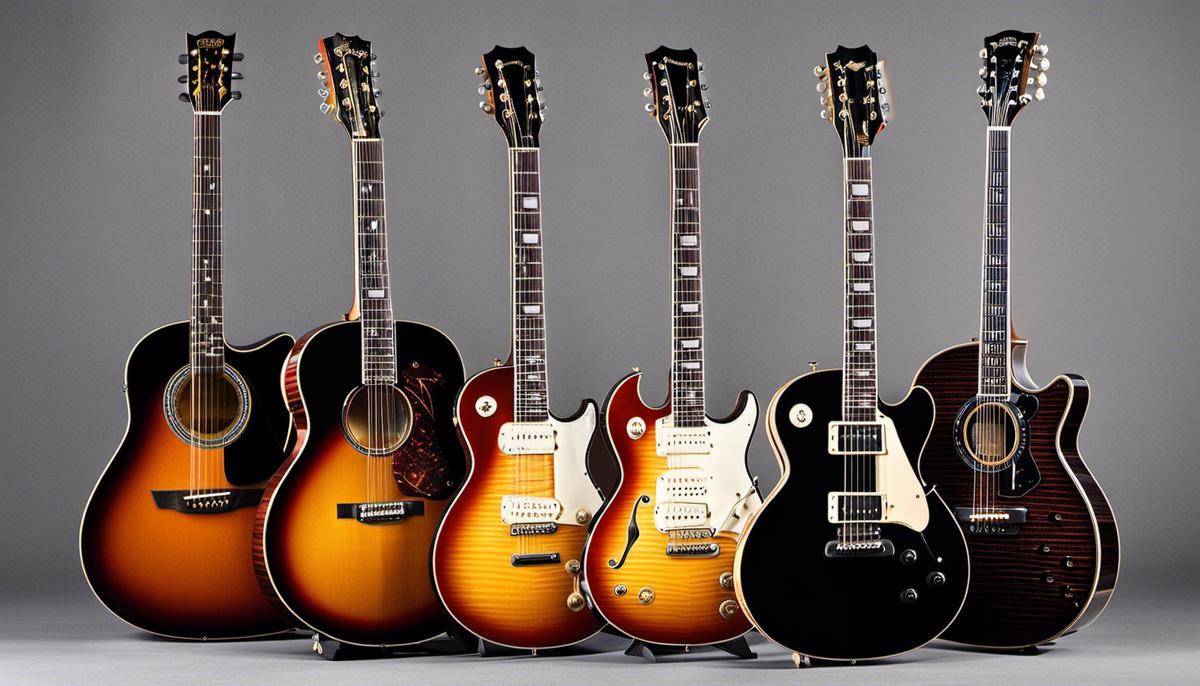
The enchanting sound of a well-played guitar often sparks the desire in many to emulate the skilful fingers that strum them. But embarking on the journey of guitar playing can be overwhelming, particularly when choosing the first instrument. It is important to understand the fundamental principles of guitars, including their types and components, as it will significantly influence the learning process and overall playing experience.
Buying a guitar is not just about aesthetics or price, but involves factors like size, material, strings, and most importantly, your comfort and ease of handling. This undertaking might sometimes feel like an arduous task, especially with myriad guitar models flooded in the market. This guide’s intention is to simplify that process, by providing an ultimate beginner’s guide to purchasing a guitar. It encompasses understanding the basics of guitars, the factors to consider when buying a beginner’s instrument and a comprehensive list of recommended guitars for beginners.
Understanding The Basics of Guitars
Understanding Different Types of Guitars
For beginners who are interested in learning to play the guitar, understanding the different types is an essential first step.
Acoustic guitars, which are among the most common for beginners, have a hollow body that amplifies the sound of the strings. These guitars offer a rich, resonant sound, and are often used in folk, country, pop, and rock music. There are two main types of acoustic guitars: steel-string and nylon-string.
Electric guitars require amplification and produce a variety of sounds, which can be modified through different settings and effects. These guitars are usually used in genres like blues, rock, and metal. They have a solid body and use pickups to convert the vibration of the strings into an electrical signal, which is then amplified.
Classical guitars, also known as Spanish guitars, are similar to acoustic guitars, but with nylon strings that produce a softer, more mellow sound. These guitars are primarily used for classical music and Flamenco.
Parts of a Guitar
The main parts of a guitar are the body, neck, and headstock. The body can be hollow (as in acoustic and classical guitars) or solid (as found in electric guitars). The neck is where you place your fingers to create notes and chords. The headstock is where the tuners are located, which you turn to tune the strings.
The body includes the sound hole (on acoustic and classical guitars) where the sound resonates, and the bridge, where the strings are anchored. On electric guitars, instead of a sound hole, there are pickups which capture the vibration from the strings and transmit them as electric signals to the amplifier.
On the neck, you’ll find the fretboard or fingerboard, with metal wires (frets) running across it at intervals. Each fret represents a half step in the chromatic scale. The strings, usually six in number, run from the guitar’s base over the sound hole or pickups and up the neck to the tuners at the headstock.
Understanding Guitars for Beginners
Grasping the fundamental operation of guitars is key to choosing the perfect one for you. In simple terms, guitars generate sound when the strings vibrate. This happens when the strings are either plucked or strummed, causing a vibration at a specific frequency that produces a sound wave. This sound is amplified either through the body and soundboard of an acoustic or classical guitar, or via pickups in an electric guitar which converts this vibration into an electric signal. This signal is then amplified.
Notably, the physical properties of the strings play a huge role in the sound produced. Strings that are thicker and tighter deliver lower, louder tones, whereas lighter, looser strings create higher, quieter tones. By pressing a string against a fret, the vibrating string portion is shortened, increasing its frequency and the pitch of the note produced. Therefore, the best beginner guitar for you largely depends on your preferred music genre. Classical music enthusiasts or those who fancy mellow tones might find classical guitars more suitable while acoustic guitars provide a versatile option fitting for a wide variety of styles. For those keen on rock, blues, or electronic music, electric guitars could be the perfect match.

Factors to Consider when Buying a Beginner Guitar
Choosing the Right Guitar Size and Type
When choosing a beginner’s guitar, size and type have to be critically considered. Full-sized guitars might appear daunting and difficult to maneuver for some beginners, especially children. For these individuals, starting with smaller half or three-quarter-sized guitars can be a more manageable alternative. When we talk about types, classical guitars feature a wide neck with nylon strings that are gentle on the fingers though, one might experience sliding fingers off these strings.
Electric guitars, which have a thinner neck and lighter gauge strings, might be a more attractive option for those who aspire to rock music since they are relatively easier to play. On the other hand, acoustic guitars are most fitting for singer-songwriters who appreciate their range and tonal variety.
Material and Craftsmanship
Material and craftsmanship are also quite crucial. Top-rated beginner guitars are usually those composed of decent quality wood, such as spruce, cedar, or mahogany. Cheaper materials, like plywood, tend to produce less natural and less resonant sound. Equally important is to check the guitar’s craftsmanship such as its finishes, bindings, and the quality of construction in places where the guitar elements join.
Guitar Strings
Strings can make a huge difference in the player’s comfort and the sound of the guitar. Lighter strings are easier to press down, making them a good choice for beginners. Nylon strings, which are usually found on classical guitars, are known for their soft, mellow tone and are the easiest on fingers.
Price and Buying Location
When it comes to price, good beginner guitars can range anywhere from $50 to $300. It’s important not to overspend on your first guitar. As for where to buy a guitar, it may be best to go to a guitar shop to get advice from staff and try guitars out. However, online purchasing is also a viable option, offering the chance to compare prices more quickly and easily.
New vs Used Guitars
Choosing between new and used guitars is also a consideration. New guitars ensure no wear or damage, but they can be more expensive. A used guitar can be exciting because it might allow you to buy a ‘better’ guitar for the same money as a lesser new guitar. However, a used instrument may require more maintenance and repairs.
Consider Comfort and Handling
The first thing a beginner guitarist should consider is the comfort and ease of handling of the guitar. No one wants to feel like playing their guitar is a struggle, so it’s essential to consider the guitar’s weight, the neck shape, and the action, which is the distance between the strings and the fretboard. All these factors affect how easy or difficult it is to play a particular guitar. Ultimately, the best beginner guitar is one that feels comfortable in your hands and encourages you to consistently practice.

Top Recommended Guitars for Beginners
Reasonably Priced Option: Fender American Professional II Stratocaster
One guitar that beginners might find comfortable and easy to handle is the Fender American Professional II Stratocaster. This model is highly revered for its iconic look and diverse sound profile, making it suitable for a variety of music genres ranging from rock to jazz, blues, and country. Furthermore, this electric guitar’s ‘Deep C’ neck shape and narrow-tall frets contribute to its comfortable playability. The Stratocaster’s new V-Mod II single-coil pickups provide an articulate sound while retaining the warm, bell-like chime that this model is famed for. The Fender American Professional II Stratocaster is available in numerous colors and styles. Though, it’s worth noting that it is a bit pricey compared to other beginner’s guitars.
Yamaha FG800
For starters who prefer acoustic guitar, the Yamaha FG800 is the top recommendation. Its quality and affordability make it an ideal option. It is designed with solid Sitka spruce top and Nato/Okume back and sides which gives it a rich, bright sound. The Yamaha FG800 also features a comfortable neck and excellent hardware that would soothe beginners into regular practice.
Squier by Fender Affinity Series Stratocaster
For those newbies who wish their first guitar to be electric on a budget, choose Squier by Fender Affinity Series Stratocaster. This is an economic alternative to the Fender Stratocaster and still packs a punch with tonal versatility thanks to its trio of single-coil pickups. The C-shape neck is a comfortable fit for novice hands, and the frets are accessible to the player regardless of hand size.
Ibanez GRX20W GIO
Another electric guitar suitable for beginners is the Ibanez GRX20W GIO. Known for its wide range of tones suitable for rock and heavy metal, this guitar features a comfortable neck and a solid body. It has a poplar body, a maple neck, and a rosewood fretboard, each contributing to the overall quality of sound and comfort.
Cordoba C5
For those aspiring to learn classical tunes on nylon strings, the Cordoba C5 is an excellent starter classical guitar. Its solid cedar top, mahogany back and sides offer rich tones associated with classical music. Its soft playing action and lightweight construction makes it comfortable for beginners.
Epiphone Les Paul Player Pack
Finally, the Epiphone Les Paul Player Pack is an all-in-one bundle for beginner electric guitarists. You’ll get a Les Paul Special-II LTD guitar, equipped with two humbucker pickups for classic Les Paul tones. The package also includes a 10-watt Electar guitar amp, a clip-on headstock chromatic tuner, a guitar strap, medium picks, and a carrying bag. It’s a cost-effective solution for new players that delivers solid performance and a recognizable look.
Remember, the best guitar for a beginner ultimately depends on the individual’s specific needs, including their budget, preferred musical styles, and physical comfort with the instrument. Hence, it’s essential to try a few out before settling on your instrument of choice.

Choosing a suitable beginner guitar can influence not only the progress of learning, but also the love for the instrument. Therefore, understanding the fundamental principles of guitars, the factors to consider when buying your first instrument, and a thorough awareness of recommended guitars for beginners are essential.
Your journey as an aspiring guitarist should ideally begin with a guitar that complements your style, feels comfortable, and resonates with your musical tastes. Establish your budget, assess your needs, research, and never hesitate to seek advice. A well-informed decision will shape both your playing technique and musical journey, making the experience joyous and rewarding. So, gear up, kick start your amazing journey of music, and let your guitar sing your soul’s melody.
Comments are closed.